AMD Radeon RX 470 Review - Performance, Benchmarks and Verdict Review
Performance, Benchmarks and Verdict
A Full HD wizard that sips electricity
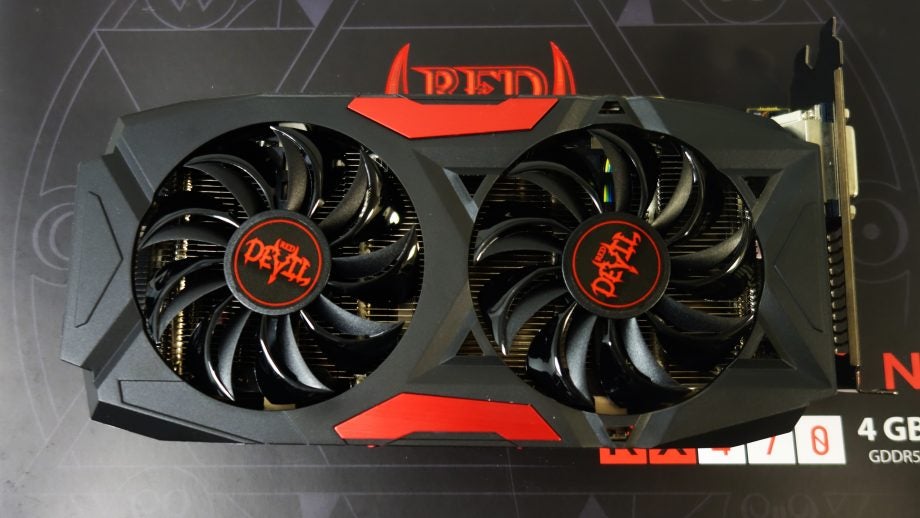
Sections
- Page 1 AMD Radeon RX 470 Review
- Page 2 Performance, Benchmarks and Verdict Review
AMD Radeon RX 470 – Performance and Benchmarks
How we test: I tested the Radeon RX 470 in our in-house test rig. It represents a fairly typical gaming PC and consists of the following components:
- Motherboard: Asus Z170-Deluxe
- Processor: Intel Core i5-6600K (not overclocked)
- RAM: Corsair Vengeance 2,666MHz, 16GB DDR4
- Cooler: Corsair H60 liquid cooler
- PSU: Corsair CX750M
- SSD: Samsung 850 EVO
- OS: Windows 10 Pro 64-bit
This only takes into account Full HD gameplay. The RX 470 is capable of 1440p as well, but since Trusted’s tests focus on games running on maximum graphics settings, I’m focusing on Full HD only.
Note: One of the key points of comparison is the RX 480. My benchmark figures for that card are based on the 8GB model. Third-party tests point to the cheaper 4GB card performing a couple of percentage points slower, at most, than the 8GB version.
One final point to remember: The GTX 1060 benchmarks here are from the Founders Edition card, which is effectively a reference design with slightly lower clock speeds than the GTX 1060s on sale now from third-party card manufacturers.
Now let’s get to those numbers…
Related: Best PC games
Dirt Rally
Dirt Rally is the least challenging title Trusted runs benchmarks on. The biggest challenges here are fast-moving textures and some particle effects.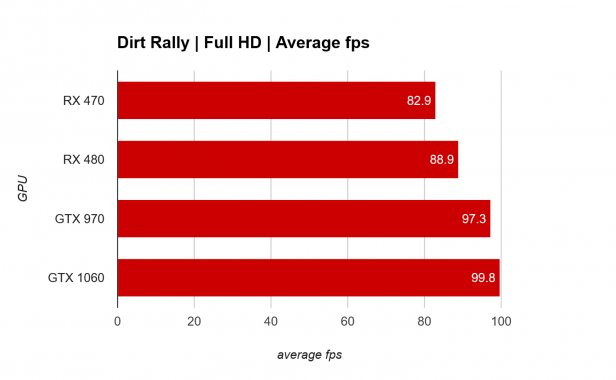
Dirt Rally is the RX 470’s bread and butter, and unsurprisingly it performed extremely well here, scoring an average frame rate of 82.9fps. This is a great GPU for racing games and other less challenging titles.
For comparison, the RX 480 was just 7% faster.
Middle-earth: Shadow of Mordor
Warner Bros’ third-person adventure title is a tough one on graphics cards, with the short benchmark including lots of particle effects, explosions and lighting challenges. 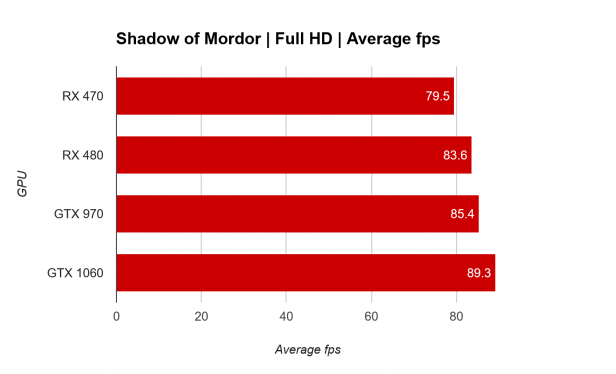
The RX 470 was once again extremely capable here, managing a fantastic 79.5fps, making it very playable. Here it was just 5% slower than the RX 470.
Because it performed so well, we also tested it at 1440p resolution at the same Ultra settings and achieved another very playable result of 57.2fps.
GTA V
GTA V is one of our more challenging benchmarks, with high-speed textures, loads of objects and plenty of physics calculations as well. The benchmark is run at a combination of High and Very High settings and 4x anti-aliasing.
The RX 470 managed 59.4fps, just off the hallowed 60fps I always look for. It’s an excellent result in a challenging game. That result puts it around 13% slower than the RX 480. The extra horsepower of the RX 480 is in evidence here.
Hitman
Episodic stealth game Hitman is tough, but it was built with AMD in mind, so performance here is an indicator of the best the RX 470 is capable of. At Ultra settings the RX 470 managed 67.1fps, just 4% slower than the RX 480. 
Rise of the Tomb Raider
Rise of the Tomb Raider presents GPUs with a series of fairly challenging tasks, including lighting and particle effects.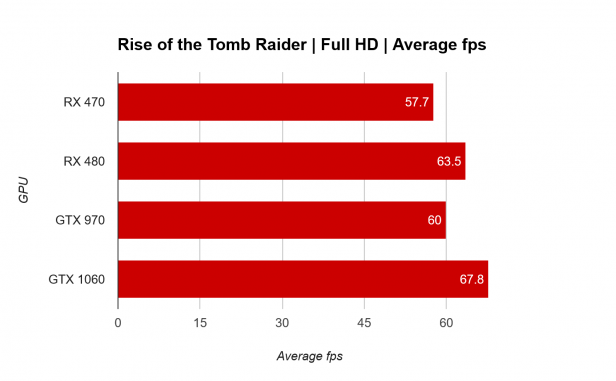
The RX 470 managed 57.7fps, its second-slowest result behind GTA V, but still very fast and stable in what can be a difficult title. I also had a go at 1440p, and at Ultra settings it managed an average of 39.1fps. With a bit of tweaking you could easily get this up to beyond 45fps for some fairly smooth 1440p gameplay.
Fire Strike Ultra
3DMark’s Fire Strike Ultra is an incredibly difficult and unforgiving benchmark that forces a graphics card to render some challenging visuals at a 4K resolution. It doesn’t represent any game in particular, but the overall score it creates is fairly representative of overall performance.
Here, the RX 470 is 299 points off the RX 480, equating to 11%. This is a slightly greater performance delta than in all of the games I benchmarked, and points to the incredible strain Fire Strike Ultra puts on both memory and GPU. It was here I also recorded a peak temperature reading of 66ºC, making the RX 470 the coolest card we’ve tested this year. This isn’t a great surprise, though, since it has that dual-fan cooling system on board, whereas the rest had single-fan solutions.
Power draw
The RX 470 isn’t hugely different to the RX 480 in terms of power consumption, either. Taken during the Hitman benchmark, our test system reached a peak power draw of 236W, compared to the 249W of the RX 480 under the same circumstances. This is likely due to the overclocking settings applied by PowerColour; the base thermal design power (TDP) of the RX 470 should be 120W, 30W less than the RX 480.
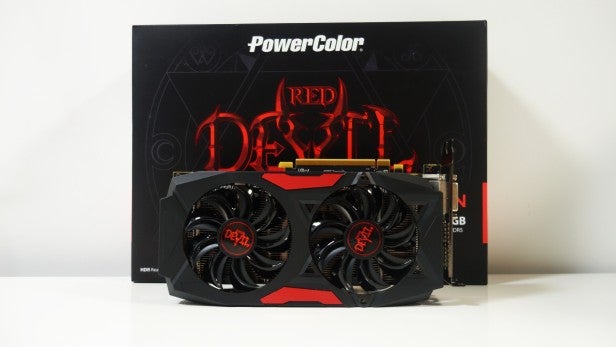
Should I buy the AMD Radeon RX 470?
At the time of writing, buying an RX 470 for £189 or £199 isn’t a bad idea, but its price is just slightly lower than a 4GB RX 480. While the performance delta is small, if your budget will stretch a tiny amount more, the RX 480 is a better buy for the longer term. Whether that continues to be the case in the next few months is unknown, but as this is a review written in the here and now, I currently can’t see any compelling reason why you should buy an RX 470 over a 4GB RX 480.
The big caveat here is whether AMD actually continues to sell the 4GB RX 480. There are far fewer 4GB RX 480s on the market at the moment, and considering it’s been two months since its launch, this makes things tricky. If the situation changes, I will update the review.
Related: Best graphics cards
Verdict
An excellent card for Full HD gaming, but wacky pricing at the time of review makes it a hard sell.


